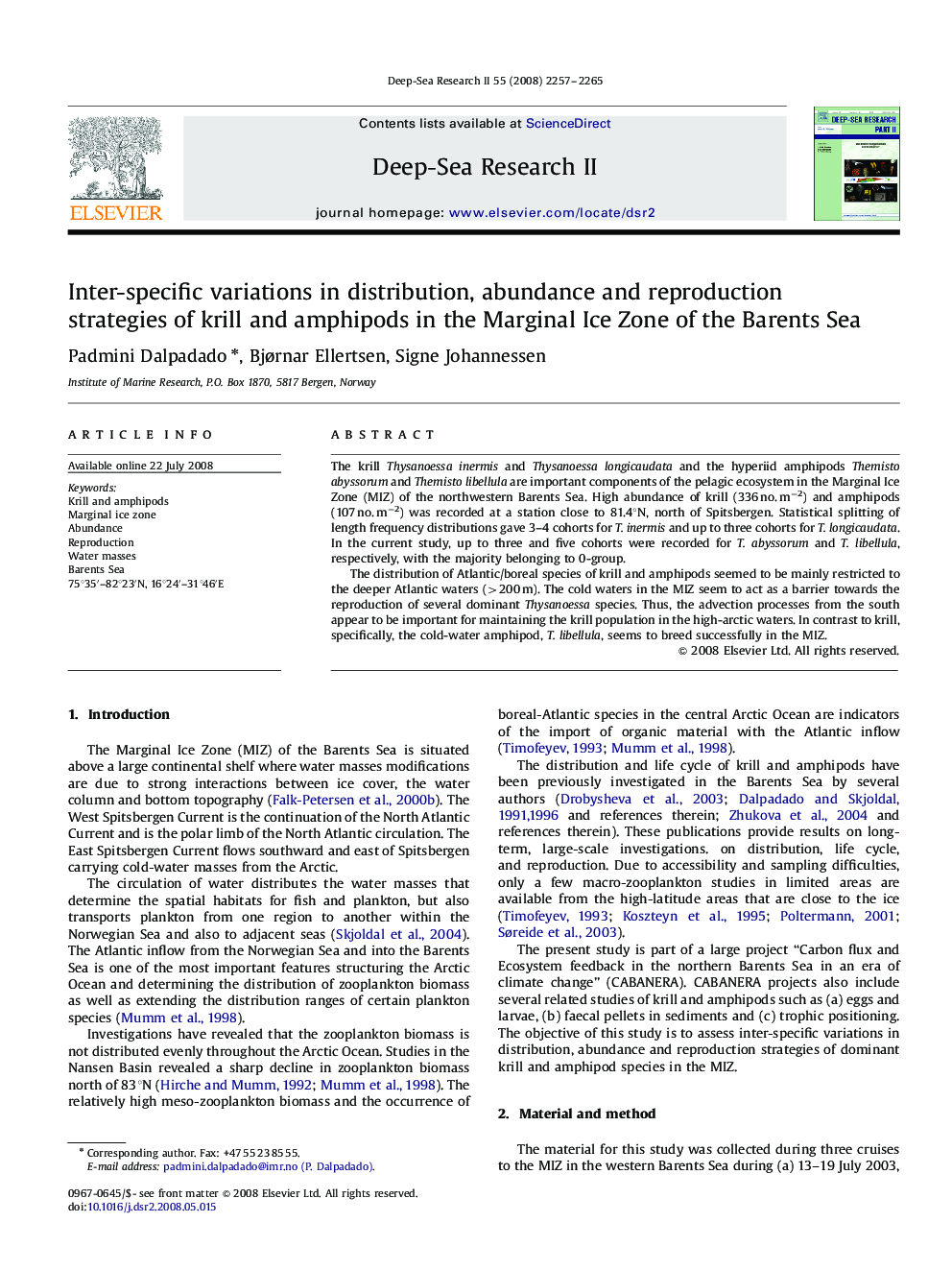| Article ID | Journal | Published Year | Pages | File Type |
|---|---|---|---|---|
| 4537948 | Deep Sea Research Part II: Topical Studies in Oceanography | 2008 | 9 Pages |
The krill Thysanoessa inermis and Thysanoessa longicaudata and the hyperiid amphipods Themisto abyssorum and Themisto libellula are important components of the pelagic ecosystem in the Marginal Ice Zone (MIZ) of the northwestern Barents Sea. High abundance of krill (336 no. m−2) and amphipods (107 no. m−2) was recorded at a station close to 81.4°N, north of Spitsbergen. Statistical splitting of length frequency distributions gave 3–4 cohorts for T. inermis and up to three cohorts for T. longicaudata. In the current study, up to three and five cohorts were recorded for T. abyssorum and T. libellula, respectively, with the majority belonging to 0-group.The distribution of Atlantic/boreal species of krill and amphipods seemed to be mainly restricted to the deeper Atlantic waters (>200 m). The cold waters in the MIZ seem to act as a barrier towards the reproduction of several dominant Thysanoessa species. Thus, the advection processes from the south appear to be important for maintaining the krill population in the high-arctic waters. In contrast to krill, specifically, the cold-water amphipod, T. libellula, seems to breed successfully in the MIZ.
